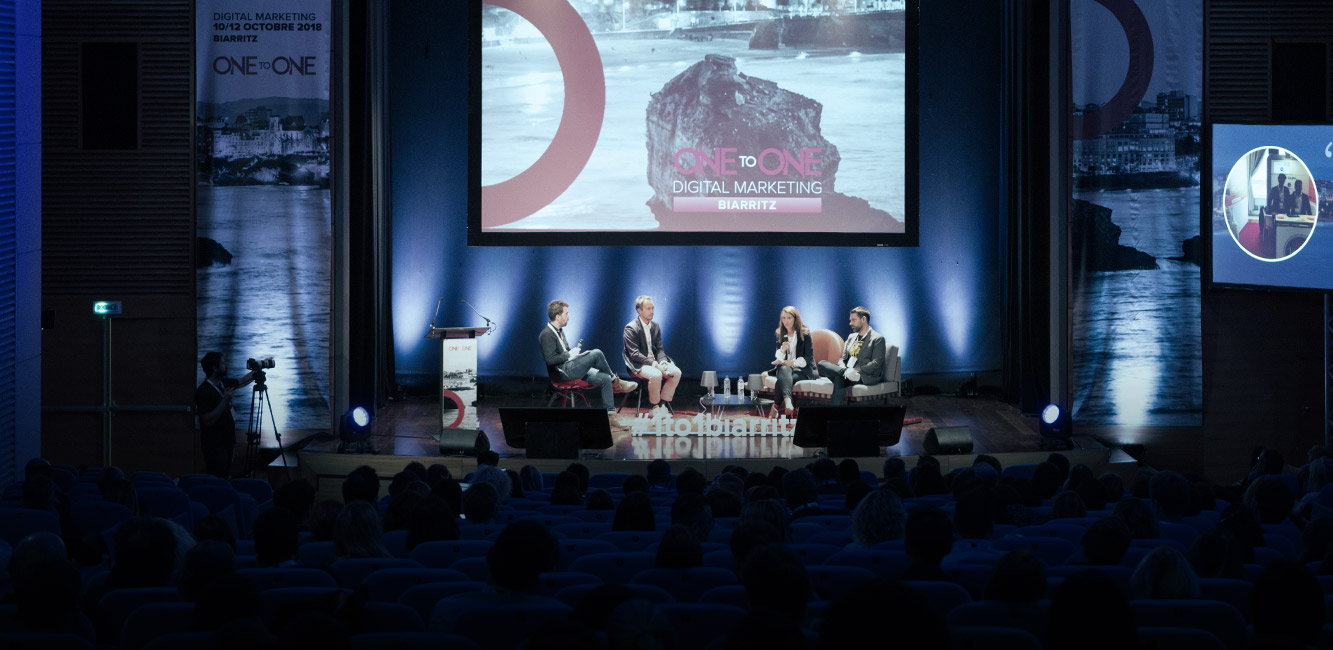Local marketing at the heart of the strategy to conquer and retain customers
Sophie Leclerc, CMO of Dolmen, takes part in this conference at One to One Biarritz 2019 to present the importance of local marketing in customer loyalty.
With the digitalisation of the consumer, consumers have access to all the products they want on the Internet. In spite of this, 90% of sales are still made in points of sale*. What makes the difference? Customer experience.
Customer experience is that moment of pleasure that the consumer gives himself when he buys at a point of sale rather than another. Local marketing can be a solution to give the consumer a unique experience, allowing brands to retain their customers.
Gamification to collect data locally and build customer loyalty
How to collect data to win and retain customers? For Sophie Leclercq, gamification is «a super lever to collect data, to generate traffic and turnover, in the short, medium and long term». The game introduces products and brands:
- 69% of French people prefer brands that offer games
- 64% of French people are ready to buy more often the products of a brand that offers games
The objective of gamification
The objective of gamification is to collect data, generate traffic, increase the average basket, drive-to-store or to retain its customers.
Depending on the objectives and the context, it is possible to propose different mechanisms as part of a loyalty strategy:
- In the case of in-store games, the interactions will be shorter, because the consumer’s goal when he goes to a point of sale is rather to buy and discover products than to have fun. On the other hand, the datacollected are of better quality.
- Online games are longer, as consumers usually have more time. On the other hand, the forms are shorter, because the propensity to give information online is less.
Gamification in stores
During a point-of-sale transaction:
- on average 20% of store traffic gives information
- the opt-in rate for e-mails and SMS is higher than online
- the information collected goes further
- the average basket following participation in the game increases
The agency Dolmen gives some figures of a communication strategy that it conducted in store to retain its customers. The operation lasted 10 days and made it possible to collect:
- 10,000 contacts
- 6,700 opt-in emails and 8,000 opt-in SMS (50% of the data were new, the others were update)
The Drive-to-Store device
During a drive-to-store device, there are two steps:
- the online game
- in-store purchase
What is the path of such a device?
- communicate outside the store, for example: “1 chance in X to win your purchases, register online and come to the store”
- to see if the consumer has won, they need to buy
- the retailer tracks those who register and those who return, which helps measure the impact of media investment
The value of the drive-to-store strategy is multiple:
- gain new customers, build customer loyalty
- collect data
- increase the average basket, generate traffic and generate short-term profit
- retake participants on a future consumer loyalty campaign
Some figures are again given by the agency Dolmen. In a supermarket, with about 4,000 participants:
- €150,000 turnover could be generated
- 45% of registrants purchased in-store
- the average basket increased by 80%
How to link central and local communication strategies at the same time?
Once this data is collected, it must be integrated at a central level and made accessible at a local level in order to activate it at the store level.
The entire scan portion will be synchronised with a central CRM. The data goes up and enrich the database and then back down to local databases to be able to implement a local communication plan.
To do this, a central communication strategy must be put in place, followed by a communication and local customer loyalty strategy to complement this search for proximity between stores and consumers.
How can you give a hand to local actors?
Another local marketing challenge: how to put local points of sale at the heart of customer relations? How can we give a hand to someone who is not an expert in marketing, but who needs to communicate and build customer loyalty?
If the dissemination tools are supervised and managed by a central office, it is possible to leave the hands of local actors free, by implementing processes such as:
- creating message templates with customisable content
- validation workflows with the central organisation
- local reporting.
The Dolmen agency has measured the impact of local marketingin mass distribution:
- click rate is 3 times the national average
- sales per customer increased by 2% (considerable for large retailers)
- ROI is excellent
*this figure and all those in this article were provided by the Dolmen agency.
Speaker:
Sophie Leclercq, Chief Marketing and Strategy Officer - Dolmen



